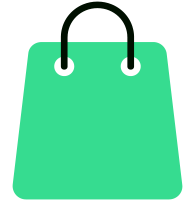Do you know that beautiful purple bud that you sometimes see on your Instagram feed or in the magazines? Want to know what is the explanation for this magical phenomenon? Read on, and we’ll explain in this post.
WHAT MAKES IT PURPLE?
It’s an interesting substance called anthocyanin. Anthocyanin is a pigment, and is part of the famous group of flavonoids that give red wine, blueberries and dark chocolate it’s cardiovascular health benefits (although there is no clinical evidence yet to support these claims). Flavonoids are widely distributed in plants, fulfilling many functions. Flavonoids are the most important plant pigments for flower coloration, producing yellow or red/blue pigmentation in petals designed to attract pollinator animals. In higher plants, flavonoids are involved in UV filtration, symbiotic nitrogen fixation and floral pigmentation.
Many strains contain a genetic predisposition for high anthocyanin levels, and you’ll often find them under monikers that begin with colors like purple, red, blue, or pink. However, this doesn’t mean these strains will always show off fancy hues, but they have a higher potential of doing so if conditions are right. Plants with low anthocyanin may produce a different array of colors in the final weeks of flowering, due to another family of molecules called carotenoids. These are responsible for the earthy gold and yellow hues buds can take on before harvest as chlorophyll shuts off.
HOW DOES IT CHANGE FROM GREEN TO PURPLE?
As you might remember from your elementary biology classes, chlorophyll is what gives plants its green color. Chlorophyll is vitally important to the photosynthesis process by which plants absorb sunlight for energy. As cannabis plants mature, they produce less of the dominant pigment chlorophyll and we begin to see those anthocyanins emerge in a show of purples, reds, and blues. Although not all cannabis strains will express purple, blue, or red hues in their lifetime, those equipped with the right genetics may do so under certain environmental conditions with more color in the buds and green leaves. The reason why cannabis produces flavonoids and anthocyanin, researchers have observed, is for protection. “Flavonoid accumulation [is] involved in many aspects of plant growth,” the study authors wrote, “including pathogen resistance, pigment production, and protection against ultraviolet radiation, which contributes to the growth of pollen and seed coat development.”
Information on anthocyanin production in cannabis is limited. What we do know comes largely from cannabis cultivation experience and studies measuring patterns of anthocyanin production in other vegetation. First, there’s temperature. Purple, red, and blue hues may appear in response to drops in temperature, since chlorophyll production takes its natural pause in autumn as the days become colder. Research on other fruits and flowers noted that higher temperatures destroy anthocyanin production. That same study also found that higher pH levels lead to the destruction of anthocyanin pigments, meaning they tend to thrive in more acidic environments.
The pH level determines which pigment the plant takes on:
- Acidic environments tend to induce red and pink coloration
- Purple coloration occurs in neutral pH environments
- Blues become present with higher pH levels
- Yellow is developed in alkaline conditions
ARE PURPLE STRAINS BETTER?
Visual appeal aside, is there reason to believe that these royal-toned flowers are better than the green hues more common to the plant? The science leans towards no.
The various ways cannabis plants are bred, with different pH levels, temperatures, and pigmentation, may also influence their effects. However, when the crop is harvested, what nutrients it was fed, how much water and light it ingested, all contribute to a cocktail of qualities and effects unique to each plant, no matter what its main color may be.
According to the European Food Safety Authority, there is no substantive evidence anthocyanins have any effect on human biology or diseases – though they contain a higher concentration of anti-oxidants, which would theoretically only be beneficial if one were eating buds. There is some minor proven correlation to anthocyanins as an anti-inflammatory, but again, would probably be more active if ingested. Seeking a strain with higher CBD content would be a better source for anti-inflammatory effects than purple hue.
Sources:
https://www.leafly.com/news/cannabis-101/why-are-marijuana-strains-purple
https://en.wikipedia.org/wiki/Flavonoid#Functions_of_flavonoids_in_plants
http://www.docsdrive.com/pdfs/ansinet/pjn/2006/90-92.pdf



